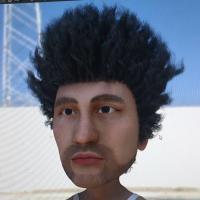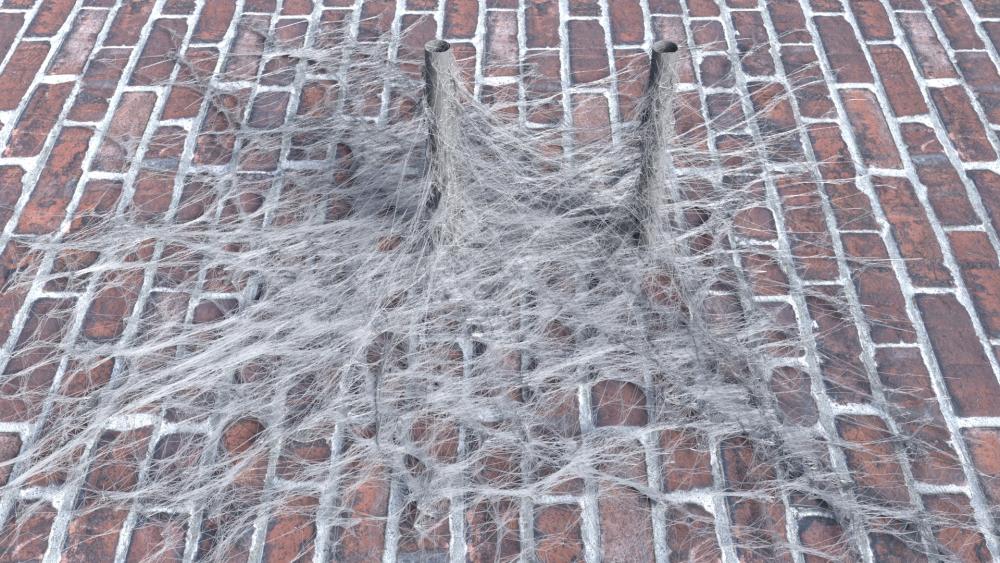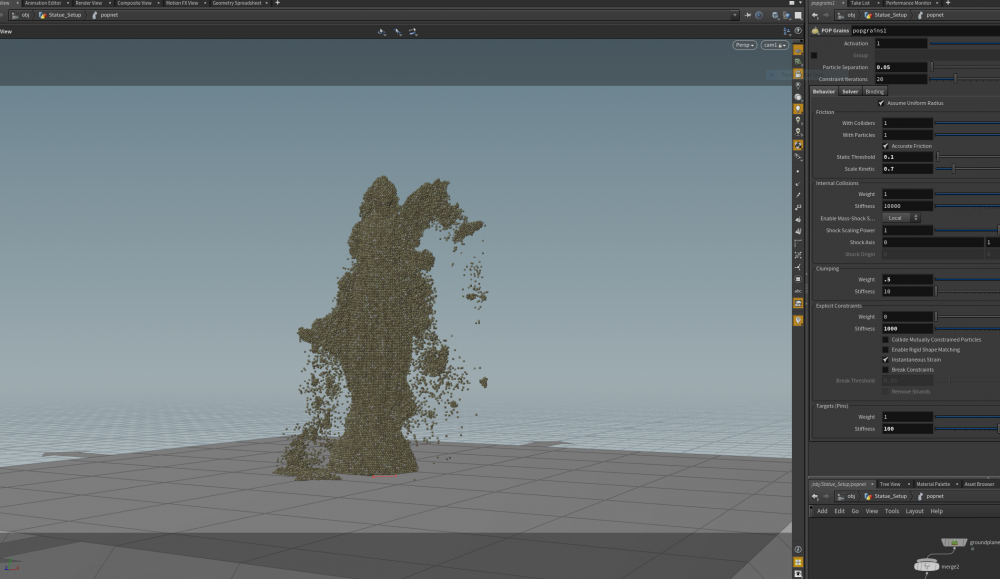Search the Community
Showing results for tags 'popgrains'.
-
Being quite new to Houdini and VERY new and completely out of my depth in VEX I have a problem which should be simple for anyone who is smart. So the setup is I have some popgrains spawning on an object that scale from 0.001 up to 0.025 using some VEX and then having those grains stick to the surface of the context geometry. Using the following code... @pscale += 0.001; @pscale = clamp(@pscale, 0, 0.025)*1.5; int pr; vector uv; float d = xyzdist(1,@P,pr,uv); @P = primuv(1,'P',pr,uv); This works fine and spawns particles that grow to all be a uniform size. My question is. What do I add or how do I change that code to add some randomness to the size that the grains scale up to. I have tried to wrap my head around the "rand" function inside the clamp function but ended up making everything explode into giant grains. I KNOW there is a simple solution to this but not having the brain for code just yet out of pure ignorance I don't know what to do. Could anyone help possibly? ALSO as a bonus for anyone who is super genius. Is there a way to define a determined number of sizes the pscale of grains can be? For example have 5 different sizes that a grain can be based on a seed or even better a probability so I can control how many of each sized grain could show up at spawn? ALSO ALSO if you could help me with this, Can I use VEX to assign Cd values to each size clone to have the ability to have different materials on different grains based upon their size. It seems like I'm asking a lot but I'm sure someone here is thinking "Pftt this is just 3 lines of code." And could help me work it out.
-
Hey fellow magicians, I am struggling to find a way to remove intersections on a bunch of scattered and randomly rotated primitives that are not spheres. I am trying to create a set up where a series of repeated elements are scattered in a volume and pushed away from each other just enough to remove intersections between them. So far I have tried to get this effect working through vellum colliders, popgrains, and rbd as well as trying to fake it through Spheres from VDB compenent. My main issue working with particle sources - it doesn't give me enough control over element distribution. This is why I am trying to find a way to generate the geo first and remove overlaps second. Nothing is working, I feel like this should be a pretty straightforward setup but I am not sure what would be the best approach to it? Any tips would be amazing! remove-intersections.hipnc
-
Hello everyone . i have a question that about pop grains . In houdini I'm used upres sand tool(pointreplicate).but is looks like unreal. So how to realize best point interpolation? Just use pointreplicate or another ways?Thank you very much...
-
aa
-
- spider web
- web
-
(and 1 more)
Tagged with:
-
Is it possible to control the "surface stiffness" of a granular sheet, so it will act like a sheet of paper or another stiff material?
- 1 reply
-
- popgrains
- granular sheet
-
(and 2 more)
Tagged with:
-
Hello, I have been experimenting with Grains node and shelf setups as as custom setups. I started with a sphere, then a sand castle and last was a statue. Some results were pleasant then I ran into some issues. Weird and strange behaviors such as floating sand clumps. Mainly it looks like too much force or friction. The problem that the solver feels like it is too sensitive (minor values can change things very quickly). Any pointers or advice is greatly appreciated. Copy_of_SandCastle.mp4 SandCastle_002.mov SandCastle_003.mp4 SandSolver_issue.mp4
-
I have an RBD Voronoi fractured object that falls to the floor, and each primitive group is given an impact time attribute when each piece hits the floor. The system works so far - I import my fractured object, delete all the primitive groups except for one, and select the Voronoi object that will turn into grains at the moment of impact using a switch that changes the input from the primitive group to the grains. As long as I'm working on a single primitive group, it works. Here's a GIF showing the result on one group. Question: How do I use my effect - that isolates a primitive group and turns it into grains at a specific frame - onto multiple primitive groups within a foreach node? My attempt at a solution: With my system in a for each subnetwork, I replaced the group name that was previously fracturepeice_15 to 'chs("../each1/group")' to reference the current group that is being processed. However, the final result of the ForEach shows only one primitive group being turned into grains or the entire sphere that was fractured being turned into a clump of grains. If anyone can shed any insight on what to try, would be very grateful. Voronoi-ODFORCE.hipnc
-
- for each
- primitive groups
-
(and 1 more)
Tagged with:







